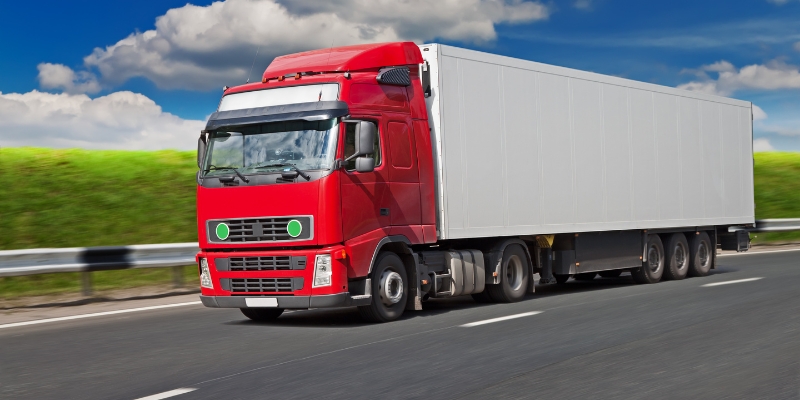The U.S. trucking industry moves over 70% of the nation’s freight, making it a critical backbone of the economy. With rising demand for goods transportation and the growth of e-commerce, it’s no surprise that entrepreneurs are eyeing the trucking sector as a lucrative business opportunity. But diving into the logistics world isn’t as simple as buying a truck and hitting the road.
Starting a trucking business requires careful planning, legal compliance, financing, and industry insight. Whether you’re an experienced driver aiming to become an owner-operator or a new entrepreneur exploring the logistics sector, knowing the steps to starting trucking business is the foundation of long-term success.
In this guide, brought to you by Trucking Business In a Box, we walk you through the top six steps to launch your own trucking company — from business formation to hitting the highway. Let’s get rolling.
1: Develop a Business Plan and Choose a Business Structure
Starting any business begins with a clear and actionable plan. In the trucking industry, this means outlining your services, target market, operational model, and financial goals.
Create a Business Plan
A solid trucking business plan should include:
- Executive Summary: Brief overview of your business goals and mission
- Market Analysis: Understand competition, demand, and pricing trends
- Operations Plan: Define routes, logistics partners, driver responsibilities
- Marketing Strategy: How you’ll attract shippers and clients
- Financial Plan: Startup costs, operational expenses, projected revenue
A strong business plan not only guides your decisions but also helps attract investors or financing.
Choose a Legal Business Structure
Your legal structure affects your taxes, liability, and registration requirements. Options include:
- Sole Proprietorship: Easiest to start but offers no liability protection
- Partnership: Shared ownership but also shared liability
- LLC (Limited Liability Company): Most popular for small trucking companies due to personal liability protection and tax flexibility
- Corporation (C-Corp or S-Corp): Better for larger, growth-focused operations but requires more paperwork
Once decided, register your business name (DBA) and file with your state’s business authority.
2: Apply for Trucking Authority and USDOT Number
To legally operate as a motor carrier in the U.S., you must obtain federal and state-level operating authority.
Get Your USDOT and MC Numbers
- USDOT Number: Required for all carriers involved in interstate commerce
- MC Number: Grants you the authority to haul regulated commodities
You can apply via the Unified Registration System (URS) on the FMCSA website.
Know the Types of Authority
Depending on your services, choose the right authority:
- For-hire carrier: Hauls goods for others and receives payment
- Private carrier: Hauls your own company’s goods
- Broker authority: Matches shippers with carriers (doesn’t haul freight directly)
Pro Tip from Trucking Business In a Box: If paperwork sounds overwhelming, consider using our compliance and registration packages to streamline the process.
3: Obtain the Required Permits, Licenses, and Insurance
Once you’ve received your trucking authority, it’s time to ensure full legal compliance.
Key Permits and Licenses
- BOC-3 Filing: Designates a process agent in each state you operate in. Required by FMCSA.
- UCR (Unified Carrier Registration): Mandatory if you cross state lines
- IFTA (International Fuel Tax Agreement) License: Needed if operating in multiple states with vehicles over 26,000 lbs
- IRP (International Registration Plan): Enables commercial vehicle operation in multiple states
- State-Specific Licenses: Varies by location. Some states may require weight distance permits, trip permits, or intrastate authority
Commercial Truck Insurance
Insurance is both a legal requirement and financial safety net. Types of insurance include:
- Primary Liability: Required to cover bodily injury and property damage
- Cargo Insurance: Protects the freight you’re hauling
- Physical Damage: Covers repairs or replacement of your truck
- Bobtail Insurance: Covers your truck when not hauling cargo
4: Secure Your Equipment and Hire Drivers
Your truck is your biggest asset — and investment. Choosing the right equipment is essential to your business model.
Buy or Lease Your Trucks
Options include:
- Buying New: Higher upfront cost, warranty included
- Buying Used: Cost-effective, but requires mechanical due diligence
- Leasing: Lower initial investment, ideal for startups with tight capital
Choose your truck based on:
- Freight type: Flatbeds, reefers, dry vans, tankers
- Routes: Short haul vs. long haul
- Fuel efficiency and reliability
Hire Qualified Drivers
If you’re not driving yourself, you’ll need drivers with:
- Valid CDL license
- Clean driving record
- Compliance with FMCSA drug and alcohol testing regulations
Offer competitive pay and benefits to attract and retain good drivers.
Trucking Business In a Box Tip: Use our Driver Recruitment Toolkit to find pre-vetted drivers fast.
5: Set Up Your Back Office and Financial Systems
Behind every successful trucking company is a solid back office operation. This includes accounting, dispatch, invoicing, and compliance tracking.
Invest in the Right Software
Essential tools include:
- Dispatch and Route Management Software: Streamline deliveries and maximize efficiency
- Accounting Software: Track expenses, fuel, repairs, invoices, and payroll
- ELD (Electronic Logging Devices): FMCSA-mandated for Hours of Service (HOS) tracking
- Load Boards: Platforms like DAT, Truckstop, and 123Loadboard help find loads and keep trucks moving
Financial Management
Manage cash flow by:
- Setting up a business bank account
- Creating a fuel budget
- Keeping maintenance reserves
- Partnering with factoring companies for faster invoice payment
Tracking IFTA taxes and mileage reports accurately
6: Market Your Trucking Business and Build Relationships
The final step is going to market — which is where many new carriers stumble. Building strong relationships and brand visibility is crucial to winning contracts and growing revenue.
Build Your Brand
- Design a professional company logo and website
- Create a Google Business Profile and social media pages
- Highlight your services, certifications, and experience
Find Freight and Customers
- Sign up with freight brokers and shippers directly
- Join load boards and bidding platforms
- Attend industry trade shows and networking events
- Reach out to local manufacturers, retailers, and distributors
Provide Excellent Service
Happy customers = repeat business. Focus on:
- On-time deliveries
- Responsive communication
- Fair pricing and flexibility
- Safety and compliance
Over time, your reputation will drive referrals and higher-paying contracts.
Conclusion
Launching your own trucking business may seem daunting at first, but by breaking it down into these six essential steps, you can move forward with confidence and clarity. From drafting a business plan and securing authority to marketing your services, every decision you make lays the foundation for your company’s long-term success.
At Trucking Business In a Box, we specialize in helping aspiring owners navigate the road ahead. Whether you need compliance guidance, help securing funding, or back-office setup, we’re your partner in building a thriving transportation business.






